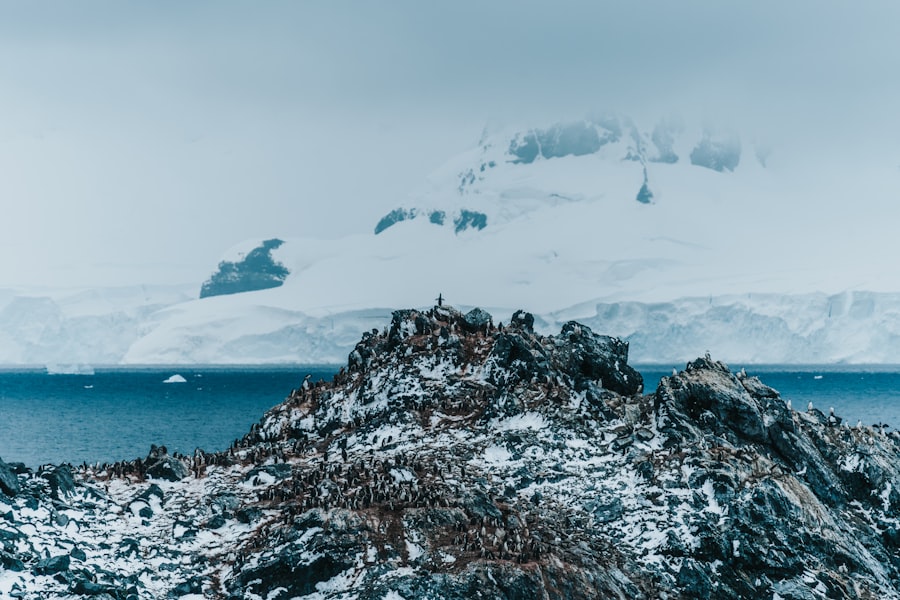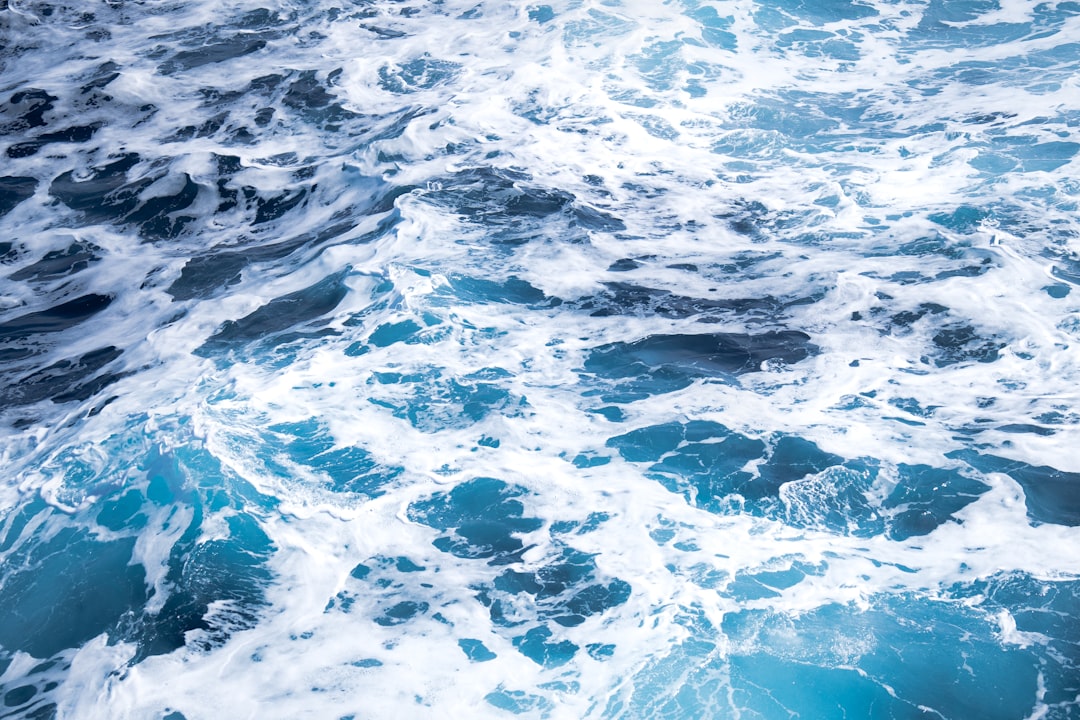The Drake Passage, a body of water situated between the southern tip of South America and Antarctica, is renowned for its tumultuous seas and unpredictable weather. Spanning approximately 600 kilometers (370 miles) in width, it serves as a critical maritime route for vessels traveling to and from the Antarctic region. Named after the English explorer Sir Francis Drake, who navigated these waters in the late 16th century, the passage has become synonymous with adventure and peril.
Its unique geographical position not only connects two major landmasses but also plays a significant role in global ocean currents, making it a focal point for marine research and exploration. For many adventurers and researchers, crossing the Drake Passage is a rite of passage, a test of endurance and resilience against nature’s formidable forces. The waters are often characterized by steep waves and strong winds, which can create a challenging environment for even the most seasoned mariners.
Despite its reputation for danger, the Drake Passage also offers breathtaking views of the Southern Ocean and the opportunity to witness diverse marine life. As such, it attracts a wide range of travelers, from scientists studying climate change to thrill-seekers eager to conquer one of the world’s most notorious maritime routes.
Key Takeaways
- The Drake Passage is a treacherous body of water located between South America’s Cape Horn and the South Shetland Islands of Antarctica.
- The challenges of crossing the Drake Passage include extreme weather conditions, strong winds, and rough seas, making it one of the most unpredictable and dangerous maritime routes in the world.
- Essential equipment and supplies for crossing the Drake Passage include sturdy waterproof clothing, sea sickness medication, and emergency communication devices.
- Navigational strategies for crossing the Drake Passage involve careful route planning, monitoring weather patterns, and maintaining constant communication with other vessels and weather stations.
- Safety measures for navigating the Drake Passage include regular safety drills, maintaining a constant lookout for icebergs and other hazards, and having a well-equipped emergency response plan in place.
Understanding the challenges of the Drake Passage
Navigating the Drake Passage presents numerous challenges that can test the mettle of even the most experienced sailors. The passage is notorious for its rough seas, which are primarily caused by the confluence of the Atlantic and Pacific Oceans. This meeting of waters creates powerful currents and unpredictable weather patterns that can change rapidly, often without warning.
The infamous “Drake Shake,” as it is colloquially known, can produce waves that reach heights of up to 15 meters (50 feet), making it essential for vessels to be well-prepared for such conditions. In addition to the physical challenges posed by the sea itself, the Drake Passage also presents logistical hurdles. The remoteness of the region means that rescue operations can be complicated and time-consuming in case of emergencies.
Furthermore, the limited availability of safe harbors along the route necessitates careful planning and navigation. Mariners must be acutely aware of their surroundings and prepared to adapt their routes based on changing weather conditions and sea states. This combination of natural and logistical challenges makes crossing the Drake Passage a formidable undertaking.
Preparing for the journey: essential equipment and supplies

Preparation is key when embarking on a journey across the Drake Passage.
A sturdy, seaworthy vessel is paramount; it should be equipped with reliable navigation systems, life-saving equipment, and communication devices.
Additionally, having a well-stocked supply of food and water is crucial, as crossing the passage can take several days depending on weather conditions and vessel speed. Clothing also plays a vital role in ensuring comfort and safety during the journey. Layered clothing made from moisture-wicking materials is recommended to help regulate body temperature in fluctuating conditions.
Waterproof outer layers are essential to protect against wind and spray from waves. Furthermore, personal safety equipment such as life jackets, harnesses, and emergency beacons should be readily accessible to all crew members. By meticulously preparing for the journey with appropriate equipment and supplies, adventurers can significantly enhance their chances of a safe and successful crossing.
Navigational strategies for crossing the Drake Passage
| Strategy | Advantages | Disadvantages |
|---|---|---|
| Using ice-strengthened vessels | Increased safety and stability | Higher cost |
| Following established routes | Access to known safe passages | Potential for encountering icebergs |
| Utilizing experienced navigational crew | Expertise in navigating challenging conditions | Reliance on human skill and judgment |
Effective navigation is crucial when traversing the Drake Passage, given its unpredictable nature. Mariners often rely on advanced navigational tools such as GPS systems, radar, and electronic charts to chart their course accurately. However, traditional methods such as celestial navigation can also be invaluable in this remote region where technology may fail or become unreliable due to extreme weather conditions.
Understanding ocean currents is another critical aspect of navigation in the Drake Passage. The Antarctic Circumpolar Current flows through these waters, creating complex patterns that can either aid or hinder a vessel’s progress. Experienced sailors often study current charts and tidal patterns before setting out to optimize their route.
Additionally, maintaining constant communication with other vessels in the area can provide valuable insights into changing conditions and potential hazards ahead.
Safety measures and precautions for navigating the Drake Passage
Safety should always be a top priority when navigating the Drake Passage. Mariners must conduct thorough safety briefings before departure, ensuring that all crew members are familiar with emergency procedures and equipment usage. Regular drills can help reinforce these protocols, preparing everyone on board for potential emergencies such as man-overboard situations or equipment failures.
Moreover, it is essential to monitor weather forecasts closely throughout the journey. Sudden changes in weather can significantly impact safety, so having access to real-time updates is crucial. Vessels should also carry comprehensive safety gear, including first aid kits, flares, and life rafts.
By implementing robust safety measures and remaining vigilant throughout the crossing, adventurers can mitigate risks associated with navigating this treacherous passage.
Weather patterns and their impact on crossing the Drake Passage

The weather in the Drake Passage is notoriously volatile, with conditions capable of shifting dramatically within short periods. The region experiences strong winds that can reach gale force, contributing to rough seas that pose significant challenges for vessels attempting to cross. Understanding these weather patterns is essential for planning a successful journey.
Typically, summer months from November to March offer relatively milder conditions compared to winter months when storms are more frequent and intense. However, even during summer, sailors must remain cautious as sudden squalls can arise unexpectedly. Mariners often rely on satellite imagery and weather forecasting services to track storm systems and make informed decisions about their route.
By being aware of prevailing weather patterns and remaining adaptable to changing conditions, sailors can enhance their chances of safely navigating the Drake Passage.
Wildlife encounters in the Drake Passage
The Drake Passage is not only known for its challenging waters but also for its rich biodiversity. The region serves as a vital habitat for various marine species, including whales, seals, and seabirds. Adventurers crossing this passage often have the unique opportunity to witness these magnificent creatures in their natural environment.
Among the most commonly sighted species are humpback whales, orcas, and southern right whales that migrate through these waters during certain times of the year. Additionally, seabirds such as albatrosses and petrels are frequently seen soaring above the waves, taking advantage of the strong winds for effortless flight. These wildlife encounters add an exhilarating dimension to the journey across the Drake Passage, reminding travelers of the beauty and fragility of marine ecosystems.
Historical significance of the Drake Passage
The historical significance of the Drake Passage cannot be overstated. It has long been a critical route for explorers seeking to navigate between the Atlantic and Pacific Oceans. Sir Francis Drake’s expedition in 1578 marked one of the first recorded crossings of this treacherous waterway, paving the way for future explorers who sought to chart unknown territories.
Throughout history, many notable figures have traversed these waters in pursuit of discovery or trade. The passage has played a pivotal role in maritime exploration, contributing to our understanding of geography and oceanography. Today, it remains an important route for scientific research expeditions aimed at studying climate change and its effects on polar regions.
The legacy of those who have crossed the Drake Passage continues to inspire modern adventurers seeking to follow in their footsteps.
Tips for managing seasickness during the crossing
Seasickness is a common concern for many travelers embarking on a journey across the Drake Passage due to its notorious rough seas. To mitigate this discomfort, several strategies can be employed before and during the crossing. One effective approach is to choose accommodations wisely; cabins located in the middle of the vessel tend to experience less motion compared to those at either end.
Additionally, staying hydrated and consuming light meals can help alleviate symptoms associated with seasickness. Many travelers find that ginger products or over-the-counter medications specifically designed for motion sickness can provide relief as well. Engaging in light physical activity on board—such as walking around or participating in onboard activities—can also help distract from feelings of nausea while promoting overall well-being during the journey.
The allure of crossing the Drake Passage for adventurers and explorers
For many adventurers and explorers, crossing the Drake Passage represents more than just a physical journey; it embodies a quest for discovery and personal growth. The allure lies not only in conquering one of nature’s most formidable challenges but also in experiencing firsthand the breathtaking beauty of this remote region. The thrill of navigating through turbulent waters while surrounded by stunning landscapes creates an unforgettable sense of accomplishment.
Moreover, crossing the Drake Passage offers an opportunity to connect with like-minded individuals who share a passion for exploration and adventure. Whether aboard a research vessel or an expedition cruise ship, travelers often forge lasting friendships while facing shared challenges together. This camaraderie enhances the overall experience, making it not just about reaching a destination but about embracing every moment along the way.
Reflecting on the experience of navigating the treacherous Drake Passage
Navigating the treacherous waters of the Drake Passage is an experience that leaves an indelible mark on those who undertake it. From facing unpredictable weather conditions to witnessing awe-inspiring wildlife encounters, each moment spent crossing this iconic passage contributes to a deeper appreciation for nature’s power and beauty. The challenges encountered along the way serve as reminders of human resilience and adaptability in the face of adversity.
As adventurers reflect on their journeys across this remarkable waterway, they often find themselves transformed by their experiences—gaining not only a sense of accomplishment but also a profound respect for our planet’s oceans and ecosystems. The allure of crossing the Drake Passage continues to captivate explorers from all walks of life, inviting them to embrace both its challenges and its wonders as they embark on their own unforgettable voyages into uncharted waters.
The Drake Passage, often referred to as the roughest sea in the world, is a notorious stretch of water between the southern tip of South America and Antarctica. Known for its unpredictable weather and tumultuous seas, it presents a formidable challenge to even the most experienced sailors. For those interested in learning more about the treacherous conditions and the unique geography of this region, a related article can be found on MyGeoQuest. This article delves into the natural forces at play in the Drake Passage and offers insights into why it remains one of the most feared maritime routes. You can read more about it by visiting this page.
WATCH NOW! Drake Passage: Earth’s Deadliest Waters Revealed
FAQs
What is the Drake Passage?
The Drake Passage is the body of water between the southern tip of South America and the northern tip of the Antarctic Peninsula. It connects the Atlantic and Pacific Oceans.
Why is the Drake Passage considered the roughest sea in the world?
The Drake Passage is known for its notoriously rough and unpredictable seas due to the convergence of strong westerly winds and the Antarctic Circumpolar Current. These factors create intense waves and challenging sailing conditions.
What causes the rough seas in the Drake Passage?
The strong westerly winds and the Antarctic Circumpolar Current create a unique combination of factors that lead to the rough seas in the Drake Passage. The winds can reach hurricane force, and the current is the largest and strongest ocean current in the world.
Are there any dangers associated with sailing through the Drake Passage?
Sailing through the Drake Passage can be dangerous due to the rough seas, strong winds, and icebergs. Ships and vessels need to be well-equipped and prepared to navigate these challenging conditions.
Are there any benefits to the rough seas in the Drake Passage?
The rough seas in the Drake Passage contribute to the mixing of waters from different oceans, which has a significant impact on global ocean circulation and climate. It also provides a unique and challenging experience for adventure seekers and sailors.
